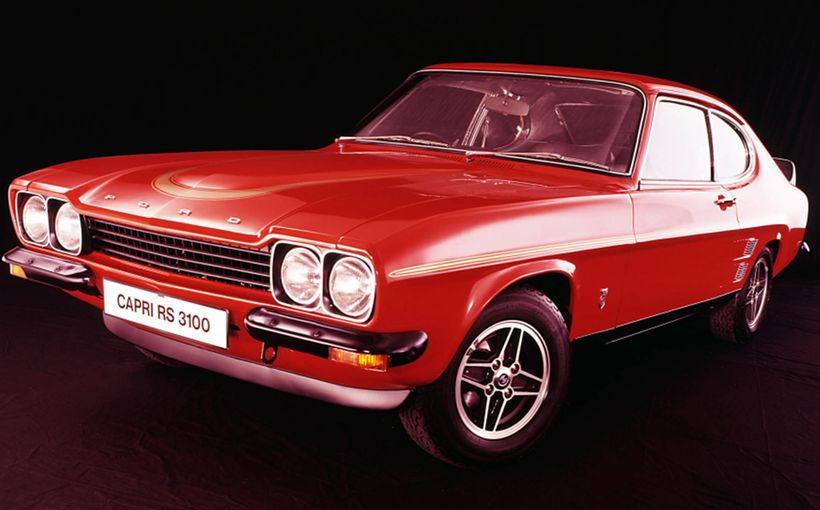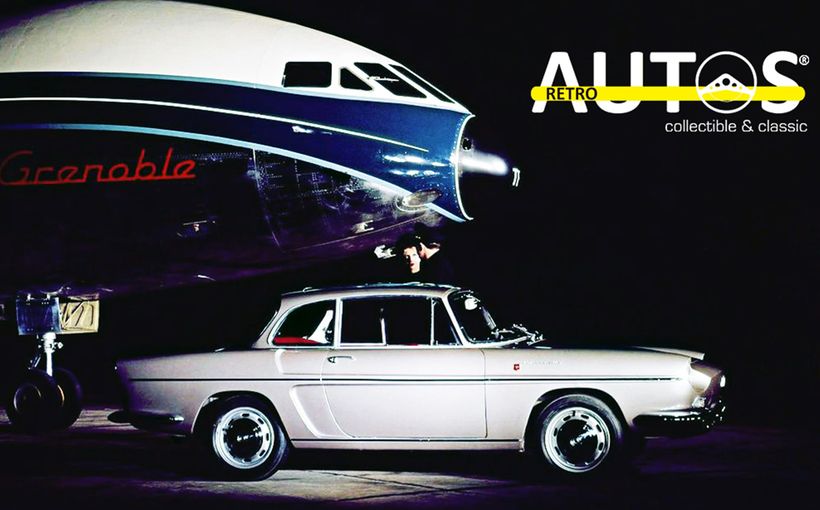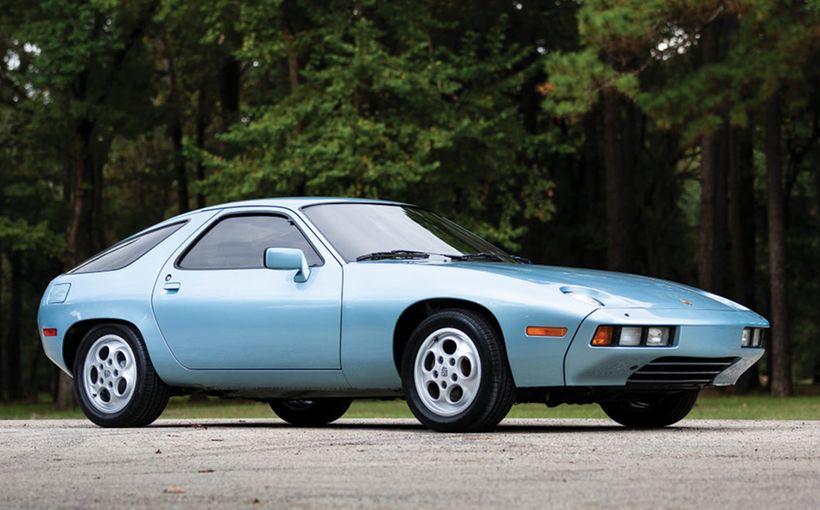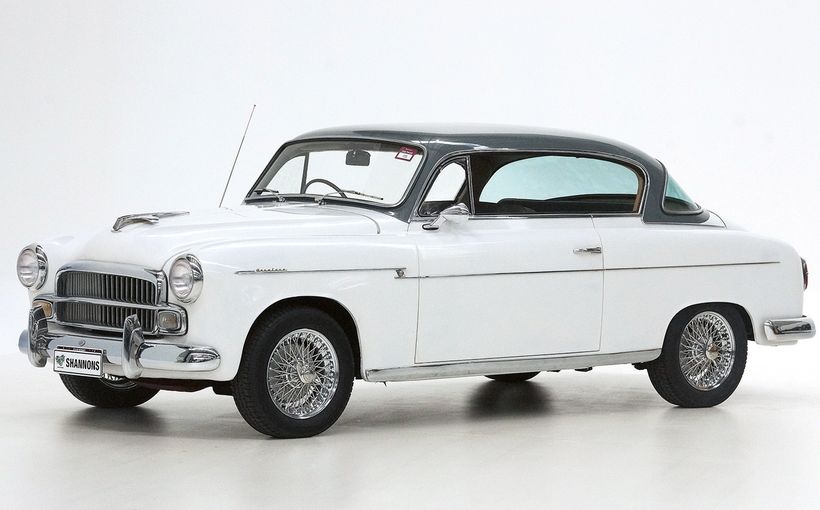Fiat 124 Sport Coupe: The Handsome Italian with No ‘Class’

In the early years of the Bathurst 500, when cars were grouped into classes based purely on retail prices, there were some grossly unfair performance disparities at times. That was never better demonstrated than in 1968, when Fiat’s sporty new 124 Sport Coupe found itself competing against Ford and Holden V8 muscle cars with more than three times its engine capacity.
Being fully imported, the beautifully proportioned two-door coupe was in Class D for cars costing $3001-$4500. In those days a Bathurst class victory was a powerful sales tool prized by local manufacturers and importers, but anyone chasing a Class D win at Bathurst in the new Fiat 124 Sport Coupe faced the near impossible task of defeating Holden’s new HK Monaro GTS 327 and Ford’s XT Falcon GT.
The latest Holden and Ford muscle cars, with top speeds of more than 200 km/h, not only had Class D sewn up but would also dominate the battle for outright honours. Ford’s victory with its ground-breaking new XR Falcon GT the previous year had triggered a muscle car war between the two manufacturing giants in 1968 that would rage for decades.

Not that the first AC model 124 Sport Coupe had any shortcomings as a Bathurst racer in its own right. It was a beautifully balanced European thoroughbred from its crisp, edgy styling to its excellent performance credentials.
With a light kerb weight of just under 1000 kg, the Fiat’s 96bhp 1438cc twin-cam engine with dual throat Weber carb could sing happily to 6500rpm and beyond with a top speed exceeding 100 mph (160 km/h). This sparkling engine was matched with a slick-shifting five-speed gearbox, twin wishbone front suspension, a well located multi-link live rear axle, four wheel disc brakes and sublime handling balance.
Against the formidable Ford vs Holden V8 onslaught in Class D, it’s hard to imagine anyone would have bothered to enter one of the new Fiat coupes at Bathurst in 1968. However, one entry was indeed lodged, from no less than prominent motoring journalist, racing driver and Scuderia Veloce race team owner David McKay.

Today, the motivation behind such a decision is hard to fathom, other than the simple notion that prominent Fiat dealer Grenville Motors in Sydney wanted to see the exciting new model racing at Bathurst alongside the new Fiat 125 and made an offer to McKay to prepare and run the car which was too good to refuse.
In any case, the lone Fiat 124 Sport Coupe was guaranteed to attract plenty of attention from spectators. And no doubt some column inches, not only through McKay’s role as motoring editor of Sydney’s Daily Telegraph newspaper but also through Wheels magazine editor Bill Tuckey, who was selected as one of the drivers. Tuckey had made his Bathurst debut the previous year in a Fiat 124 sedan, so was already well accustomed to the Italian marque on the Mountain.
His co-driver for the 1968 race was a young rookie from the NSW Hunter Valley by the name of Allan Grice, who would of course become one Australia’s top touring car drivers and a two-times Bathurst 1000 winner. Grice was hand-picked to drive the Fiat 124 Sport Coupe at Bathurst, as a result of McKay’s renowned talent-spotting skills.

“I had nothing to do with putting that Bathurst deal together,” Grice told Shannons Club. “I was running an open-wheeler (Elfin-Holbay Formula 2) at the time and going fairly well, so David approached me one day and asked ‘would you like to drive at Bathurst?’ and guess what I said?
“Fact is if somebody had said to me there’s a race in Kalgoorlie and I want you to drive a Ford Prefect I would have been there. I’d won some Formula Two races by that stage but I was funding the whole thing myself. I recall going to Catalina Park and putting it second on the grid before I clipped the fence and bent the single top control link and buckled the wheel, so I had to put it on the trailer and take it home on the Saturday because I didn’t have a spare top link or spare wheel.
“That was the budget I was running on then, holding down two and a half jobs. I was working from 3am to 8am as a pastry cook in the family business at Maitland, then I’d drive to Hexham which wasn’t far away and start work driving an Oak (dairy products) sales van until about 4pm and then I’d head back to the bakehouse and finish up there after preparing stuff for the next day. And then on the weekends when I wasn’t racing I was driving a cab. So getting a (paid) drive at Bathurst with McKay was a step up.”

The Tuckey/Grice Fiat 124 Sport Coupe qualified 30th overall in a huge 60-car field with a best time of 3 mins 19.1 secs. Although that was not even on the same clock-face as its booming Ford and Holden V8 class rivals in the sub-3 minute zone at the front of the grid, the 1438cc coupe was more than competitive with cars of similar weights and slightly larger engine capacities competing in other price-based classes.
For example, in qualifying it was faster than all but one of the four new 1608cc DOHC Fiat 125s entered in Class C and all but one of the eight new Datsun 1600s which would dominate Class B for several years at Bathurst.
After a trouble-free run in the race, Tuckey and Grice finished ninth in class and 11 laps behind Bruce McPhee’s class and outright-winning Monaro GTS 327. However, in finishing 18th outright, the 124 Coupe was ahead of all the Fiat 125s and all but one of the eight Datsun 1600s, which provides a more relevant comparison of its performance.

“I was happy with my first drive up there in the little Fiat,” Grice said. “I didn’t hit anything, I didn’t break anything. The most important thing for a rookie going to Bathurst is not to bang it or break it. After the race David came to me and said ‘v-v-very good show, Allan’ but I was not invited to return for whatever reason. It was just a oncer.
“I can’t remember the car having any mechanical problems, it ran pretty well. I do recall at one stage David pulled me aside and said I should have told him about a big spin I had at McPhillamy Park in practice, which I just flatly denied because I hadn’t spun. The next day he was good enough to front up to me again and say, ‘y-y-yes, you’re quite correct Allan, it was another Fiat’.
“I didn’t find it (the circuit) intimidating. I think the biggest intimidation was the need to constantly look in the mirrors and stay out of the way of the faster cars, because there were plenty of those. I also kept having to set the alarm clock to stop me from dozing off going down Conrod, because there wasn’t the Chase in those days and the Fiat would get to its top speed (106 mph) pretty early and just sit there.”

Following his solid Bathurst debut, Grice continued racing open-wheelers for a while before switching to touring cars. He did not return to Bathurst until the 1973 Hardie-Ferodo 1000, driving a dealer-backed Torana GTR XU-1 in which he was making quite a name for himself as a hard charger. His performances in that car attracted the attention of tobacco giant WD & HO Wills, which put its Craven Mild sponsorship behind Grice in 1974 and stayed with him for many years at the top level of the sport.
“I was winning races in Formula Two but I came to the realisation that you just couldn’t get sponsorship for open-wheelers; you really had to have a roof over your head,” Grice said with typical pragmatism.
“It was purely a commercial decision. I had no particular affection for open-wheelers over touring cars or vice versa. Throughout my career I just drove anything I could put my arse in. Where ever an opportunity would appear, I’d be there; touring cars, sports sedans, NASCARs, trucks, you name it.”

1971 Hardie-Ferodo 500
The Fiat 124 Sport Coupe was a spirited and well balanced package that certainly lived up to its name, but due to its retail price it was always going to be grouped with locally made muscle cars at Bathurst with increasingly powerful V8 engines and far superior performance.
Following its solid debut in 1968, no Fiat 124 Sport Coupes were entered in either the 1969 or 1970 Hardie-Ferodo 500s but the model did make a return to Mount Panorama in 1971. This time it was in Class E for cars over $4350, which meant its greatest rival for class honours was none other than the awesome XY Falcon GT-HO Phase Three!
Against this onslaught, a lone Fiat 124 Sport Coupe was backed by enthusiastic Sydney Fiat dealers Zanardo & Rodriguez and driven by clubman driver Ron Kearns, who for the previous three years had campaigned Fiat 125 sedans at Bathurst with co-drivers. For 1971, he elected to drive solo.

His 124 Coupe was the latest BC model, which was slightly heavier than the original AC but equipped with a larger and more powerful 1608cc twin-cam engine. The BC also featured revised front and rear styling, with a larger and nicely proportioned twin-headlight grille and different taillights reportedly shared with the Lamborghini Jarama.
Kearns qualified 35th overall in the 60-car field and well behind the numerous GT-HO Phase IIIs which decimated the competition in both qualifying and the race. After 500 miles (800 km) and more than six hours of racing, the Fiat 124 Sport Coupe again showed impressive reliability, finishing 9th in Class E behind eight Falcon GT-HOs. Kearns was also 24th outright, which placed him ahead of numerous Falcons, Toranas and R/T Chargers either running or retired.

1972 Hardie-Ferodo 500
No doubt buoyed by the unbreakable nature of the Fiat 124 Sport Coupe in endurance racing, Kearns returned to the Mountain the following year for another solo drive in a BC model.
Race organiser, the Australian Racing Drivers Club (ARDC), was starting to get the message about the unfair disparities in performance caused by its long-standing class structure based on retail prices. So for 1972, the last year the race would be run for Series Production cars, it instead devised a new structure based on a car’s engine capacity in litres multiplied by its Sydney retail price. Few people understood it though and it was only used for that year before classes based purely on engine capacities were adopted from 1973.
In any case, these new calculations resulted in cars being grouped according to their CPUs (Capacity Price Units), which meant the Fiat was now in a more equitable grouping (Class B: 3001-9000 CPUs) which included some stiff competition from Ford’s very quick Escort Twin Cam along with the Mazda RX-2 rotary, Torana LC GTR, Torana LJ 2850S and the venerable Datsun 1600.
Again the 124 Sport Coupe showed great reliability in the race, but Kearns was simply outpaced by the fastest Escorts (which won the class) and Mazda RX-2s, which filled the top six positions in Class B. Kearns finished two laps behind the winning Escort in seventh place and 19th outright.

1976 Hardie-Ferodo 1000
Four years after what many thought was the last appearance of the Fiat 124 Sport Coupe, the enduring appeal of the handsome Italian two-door saw it make a fourth and final appearance in The Great Race.
The privately-entered 124 Coupe driven by Allan Nuttall and Richard Bailey was entered in Class B (1301-2000cc). In 1976 the competition was fierce, with Escort RS 2000, Alfa 2000 GTV, Alfetta GTAM, Triumph Dolomite Sprint, Mazda RX-3, BMW 2002Tii and VW Golf GTi also vying for class honours.
Interestingly, this was also the first and only time a Fiat 124 Sport Coupe would compete in the annual Bathurst race under Group C rules, which among a variety of mechanical freedoms allowed wider wheels and tyres which nicely filled out the Fiat’s wheel arches.

Unfortunately it was not to be a good omen for the sporty Italian coupe, as the Nuttall/Bailey entry was forced to retire from the race after only 51 of 163 laps due to clutch problems. The Class B victory went to one of the very speedy Escort RS 2000s.
The Fiat 124 Sport Coupe’s Bathurst days were finally over. It’s interesting to ponder, though, how different its success at Bathurst might have been had the class structures been more favourable in the early years. We can only wonder.









